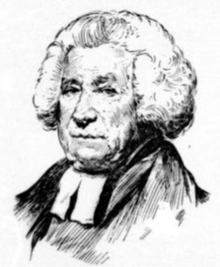St. Paul's Church (Halifax)
| St Paul's Church | |
|---|---|
| St Paul's in the Grand Parade | |
 St Paul's Church | |
| 44°38′51″N 63°34′29″W / 44.64750°N 63.57472°WCoordinates: 44°38′51″N 63°34′29″W / 44.64750°N 63.57472°W | |
| Location |
1749 Argyle Street Halifax, Nova Scotia B3J 3K4 |
| Country | Canada |
| Denomination | Anglican |
| Churchmanship | Low church |
| Website | Official site |
| History | |
| Founded | 13 June 1750 |
| Architecture | |
| Architect(s) | James Gibbs[1] |
| Architectural type | Georgian |
| Completed |
2 September 1750 |
| Official name | St. Paul’s Anglican Church National Historic Site of Canada |
| Designated | 1981 |
| Type | Provincially Registered Property |
| Designated | 7 November 1983 |
| Reference no. | 00PNS0006 |
St. Paul's Church is an evangelical Anglican church in downtown Halifax, Nova Scotia, within the Diocese of Nova Scotia and Prince Edward Island of the Anglican Church of Canada. It is located at the south end of the Grand Parade, an open square in downtown Halifax with Halifax City Hall at the northern end. Built during Father Le Loutre's War, it is the oldest surviving Protestant church in Canada and the oldest building in Halifax.[2] There is also a crypt below the church and the St. Paul's Church Cemetery. The official chapel of the church was the Little Dutch (Deutsch) Church.
Saint Paul's was designated a National Historic Site of Canada in 1981.[3][4] In 1981, it was designated a Municipal Registered Heritage Property by the former City of Halifax, and in 1983 it was designated a Provincially Registered Heritage Property both under the provincial Heritage Property Act.[1]
History

It was founded in 1749 (the same year as the Halifax colony). The construction was begun in 1750 and is based on the ground plan of Gibbs' Marybone Chapel (later St. Peter's, Vere Street) in London, with later additions such as a larger tower. Reverend William Tutty (1715-1754) opened the church on September 2, 1750.[5] Rev William Tutty was the first minister (1750–54); followed by Rev John Breynton (1754-1791) and Rev. Thomas Wood (reverend) (1751-1764), who served at the same time.[6] The church also served as the site for the initial congregation of St. Matthew's United Church (Halifax) until this church was built.
During the French and Indian War (the North American theatre of the Seven Years' War), the church was the site of the burials of two prominent Nova Scotians: Governor Charles Lawrence. (d.1760) and Catholic Priest Pierre Maillard, the latter ceremony was attended by a large number of Mi'kmaq people. (Also during the war, the church was where Horatio Gates married Elizabeth Phillips in 1754.) Soon after the war, Vice-Admiral Philip Durell (d. 1766) was buried after having participated in the Siege of Louisbourg (1758) and the Siege of Quebec (1759).
During the American Revolution the church held burial ceremonies for Francis McLean (d. 1781) who defended New Ireland (Maine) during the war; Capt Henry Francis Evans (d.1781) who died in the Naval Battle off Cape Breton (1781); Baron Oberst Franz Carl Erdmann von Seitz Hatchment (d.1782) who was the commander of the Hessian soldiers that defended Lunenburg in the Raid on Lunenburg (1782); and Governor Michael Francklin (d. 1782), whose funeral was also attended by a large number of Mi'kmaq people.
After the American Revolution, with the creation of the Diocese of Nova Scotia in 1787, St. Paul's was given the Bishop's seat, making it the first Anglican cathedral outside of Great Britain. It served as the cathedral from 1787-1864.[7] The diocese included Nova Scotia, New Brunswick, Newfoundland, St. Johns (now Prince Edward Island), and across Quebec and Ontario to Windsor, and Bermuda. For many decades it was one of the only places of worship in Halifax, and other denominations would thus hold services in the building.
The most valuable art in the Church is the monument of Richard John Uniacke by John Gibson, Via Fontanella Studio, Roma, c. 1830.
During the Halifax Explosion of 1917, a piece of wooden window frame from another building was lodged into the wall of St. Paul's Church, where it remains today.
Ministers (1749-1824)
- Rev. William Tutty (1749-1752) and his assistant, Rev. William Anwyl (1749-1750),
- Rev. Jean-Baptiste Moreau (clergyman) (1750-1753) took on the role of Tutty's assistant; later became the 1st minister of St. John's Anglican Church (Lunenburg)[8]
- Rev. Thomas Wood (1752-1764) (assistant); 1st minister at Annapolis; buried at Garrison Cemetery (Annapolis Royal, Nova Scotia)
- Rev. John Breynton (1753-1791), first Rector
- Charles Inglis, 1st Bishop of Nova Scotia, (1781), only minister buried in crypt
- Rev. Joshua Wingate Weeks (1785-1791), brother-in-law of Rev. Jacob Bailey[9]
- Rev. Robert Stanser (1791-1816), 2nd Bishop - his wife Mary Stanser, d. 1815 is buried in the crypt
- Rev. John Inglis (1816-1824), 3rd Bishop (appointed 1825).
-

Reverend Thomas Wood (1752-1764)[1]
-

Charles Inglis. d.1816, 1st Bishop
-

Rev. Robert Stanser, 2nd Bishop
-

Rev. John Inglis, 3rd Bishop
- ^ Thomas, C. E. (1979). "Wood, Thomas". In Halpenny, Francess G. Dictionary of Canadian Biography. IV (1771–1800) (online ed.). University of Toronto Press.
The Crypt and Commemorations
The crypt contains the remains of 20 congregants which are listed below.[10] Also indicated below are those that have been commemorated in the church through a plaque, a hatchment or a window.
Founders of Halifax
-

Charles Lawrence. d.1760, Governor of Nova Scotia, 1st person buried in the crypt; participated in the Battle at Chignecto and Siege of Louisbourg (1758)
-

Charles Morris, d. 1781 - Battle of Grand Pré; 2nd Chief Justice (1776-1778) (hatchment)
-
Michael Francklin, d. 1782
-
Richard Bulkeley, d. 1800[1]
-

Captain Philip Durell, d.1786 (Sieges of Louisbourg in 1745 and 1758)
- ^ While a display inside the church states that Buckeley is buried in the crypt, according to J. Philip McAleer, the evidence that Bulkeley was buried in the church is circumstantial. This circumstantial evidence rests on the fact that he helped establish the church and was an active member in it for 51 years. Also Buckeley is reported to have had the largest funeral ceremony ever to be in Halifax up to that date. Further, his wife Mary Rous has a headstone in the St Paul's Church Cemetery, while Buckeley does not. Rev Hill, however reports that Bulkeley's grave is marked by a rude stone in St. Paul's Church cemetery, presumably close to the gravestone of his wife Mary Rous. (See Collections of the Nova Scotia Historical Society, Vol. 2, p. 69)
American Revolution
-

Francis McLean - defender of New Ireland (Maine) during American Revolution, d. 1781
-
Baron Oberst Franz Carl Erdmann von Seitz Hatchment, d.1782 - Hessian Commander[1] [2]
-

Lord Charles Montagu, (Loyalist) Governor of South Carolina (1766-1773)
-

Capt Henry Francis Evans - died in the Naval Battle off Cape Breton (1781); Captain Evan's ship lost 8 men killed, including Evans, and 29 men wounded.(plaque)
-

Rebecca Byles Almon, d. 1852, (plaque) wife of William James Almon (surgeon, Battle of Bunker Hill); oldest child of Mather Byles[3][4]
- ^ p. 289
- ^ Colonel of the Hesse Cassel Garrison Regiment Von Seitz - see Hessian (soldiers). The Baron fought in the American Revolution, particularly on 16 November 1776, he captured Fort Washington; 1776-1778, Garrisoned New York; 1778-1783, Garrisoned Halifax. See "The Hessians of Nova Scotia" by John H Merz and Winthrop P. Bell entitled, "A Hessian conscript's account of life in garrison at Halifax at the time of the American Revolution". Collections of the Nova Scotia Historical Society, Volume 27, 1947
- ^ http://66.43.22.135/cgi-bin/fg.cgi?page=gr&GSob=n&GSsr=41&GScid=2203785&GRid=163057397&
- ^ Canadian Biography
- Chief Justice Bryan Finucane d. 1785, 3rd Chief Justice (1778-1785)[11]
French Revolutionary Wars (1792-1802)
-

John Wentworth, d.1820, Governor of Nova Scotia (1792-1808)
-
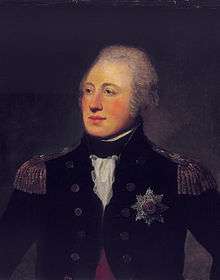
Vice-Admiral Andrew Mitchell, Commander-in-Chief, North American Station (1802-1806) wife, Lady Mary Mitchell, d. 1825 - daughter of Richard John Uniacke
- Lieutenant General William Gardiner, d. 1806, commander of the army in Halifax, Nova Scotia
- Lieutenant Colonel David Meredith, d. 1809
Second Boer War

- Stanley Banfield, d. , 2nd Canadian Mounted Rifles (plaque)
- Capt. John Halliburton Laurie, d. 1901, son of John Wimburn Laurie (plaque)
WW1
-

George Brenton Laurie, d. 1915, son of John Wimburn Laurie, (plaque)
-
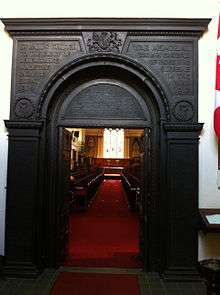
WW1 Doorway Arch - engraved with names of Nova Scotians who died
Other
-
_by_Robert_Field.jpg)
Herbert Sawyer's sister Sophia Sawyer, d. 1788 - Daughter of Rear Admiral Herbert Sawyer, Commander-in-Chief, North American Station (1785-1789)
-

Amelia Ann Smyth, d. 1817 (wife of acting Lt. Gov. of Nova Scotia George Stracey Smyth) - monument by Sir Francis Leggatt Chantrey (crypt, plaque)
-

Richard John Uniacke Monument by John Gibson, Via Fontanella Studio, Roma, c. 1830
-
.png)
Captain Sir Thomas Ussher's wife Eliza Ussher, d. 1835 (plaque)[1]
-

Chief Justice Sampson Salter Blowers, d.1842 - instrumental in ending slavery in Nova Scotia (plaque)
-

Sir John Harvey, d. 1852, Governor of Nova Scotia (plaque)
-
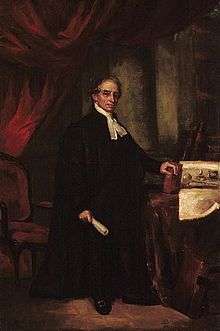
Brenton Halliburton, d. 1860 (plaque)
-

Isabella Binney Cogswell, d.1874 (plaque)
-

Hon. John William Ritchie, d. 1890 (plaque)
-
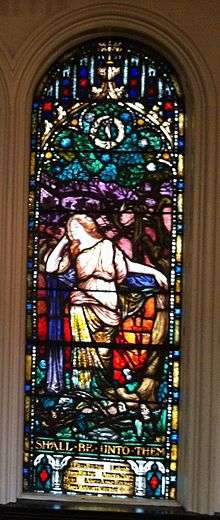
Eliza Ritchie (d.1933)and sisters (window)
-
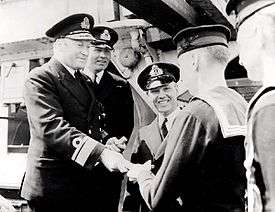
Rear admiral Leonard W. Murray, d. 1971 - ashes in Naval Vault
- Henry Newton, d. 1802 (plaque)
- Charles Francis Norton, d. 1835, 52nd Light Infantry (plaque)
- Capt. Douglas, HMS Sylph, d. 1813 [12]
- Lt. Col. Peter Waterhouse, c. 1922 81st Regiment of Foot (plaque)
- William Bruce Almon, d. 1850 (plaque) [13]
- Lieutenant-Colonel John James Snodgrass (1796 - 1841), a British military officer, fought in the Battle of Waterloo (1815) and was an aide-de-camp to Sir Archibald Campbell, 1st Baronet and author. (plaque)
- Sarah Mudge, d. 1818 [14]
- Susan Hardy, d. 1799[15]
- George Bertie Maitland, d. 1831, (age 1, son of Lt. Gov. of Nova Scotia Peregrine Maitland)
- Joseph Frederick Wallet DesBarres - Governor of Prince Edward Island and Cape Breton is buried at St. George's Church
Notable events
-

Horatio Gates is married to Elizabeth Phillips on October 20, 1754
-

Catholic Priest Pierre Maillard funeral is attended by large number of Mi'kmaq (1762)[1]
-
NS Governor Michael Francklin funeral is attended by a large number of Mi'kmaq (1782)
-
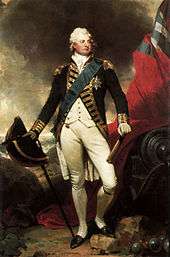
Prince William Henry - later King William IV attended(1786)
-

Prince Edward attended (1794)
-
Funeral for Richard Bulkeley, d. 1800, was "the largest ever seen in Halifax."[8]
-

Prince Edward, later King Edward VII attended (1860)
- ^ Collections of the Nova Scotia Historical Society. Vol. 1, p. 44
- ^ father of Edward Winslow (loyalist), his former home now belongs to the Mayflower House Museum
- ^ Winslow's tombstone is inscribed in part "his fortune suffered shipwreck in the storm of civil war", the "civil war" being the American Revolution, American Patriots fighting American Loyalists.
- ^ p. 786
- ^ https://archive.org/stream/winslowmemorialf0001holt#page/58/mode/2up/search/nova+scotia
- ^ https://archive.org/stream/winslowmemorialf0001holt#page/58/mode/2up/search/nova+scotia
- ^ https://archive.org/stream/collectionsmass35socigoog#page/n190/mode/2up/search/edward
- ^ https://archive.org/stream/collectionsofnov12nova#page/n111/mode/2up
- Saint Paul's has a royal pew, and many royal guests have visited, including the father of Queen Victoria, Prince Edward, and Princesses Michael (1984), Margaret, Alexandra, and Elizabeth (Queen Elizabeth II), and Prince Edward in 1987. However, HRH Prince George, later to become King George V of the United Kingdom, declined to use the royal pew during his visits to Halifax as the commander of the HMS Thrush. [16]
See also
- St. Matthew's United Church (Halifax)
- St. John's Anglican Church (Lunenburg)
- List of oldest buildings and structures in Halifax, Nova Scotia
- History of the Halifax Regional Municipality
- History of Nova Scotia
- Military history of Nova Scotia
References
Texts
- J. Philip McAleer. A pictorial history of St. Paul's Anglican Church, Halifax, Nova Scotia 1 edition Appendix 2, 1993
- Thomas, C. E. (1974). "Tutty, William". In Halpenny, Francess G. Dictionary of Canadian Biography. III (1741–1770) (online ed.). University of Toronto Press.
- Memorials at St. Paul's Church, Acadiensis, p. 58
- History of St. Paul's Church. Collections of the Nova Scotia Historical Society
Endnotes
- 1 2 St. Paul's Anglican Church. Canadian Register of Historic Places. Retrieved 16 April 2013.
- ↑ It was the second protestant church ever established in Canada. The first was Cathedral of St. John the Baptist (St. John's), Newfoundland (1699).
- ↑ St. Paul's Anglican Church National Historic Site of Canada. Canadian Register of Historic Places. Retrieved 16 April 2013.
- ↑ St. Paul's Anglican Church National Historic Site of Canada. Directory of Federal Heritage Designations. Parks Canada.
- ↑ Pound, Richard W. (2005). 'Fitzhenry and Whiteside Book of Canadian Facts and Dates'. Fitzhenry and Whiteside.
- ↑ Breynton was absent from 1785-1791.
- ↑ Baxter Emsley, Sarah (1999). St. Paul's in the Grand Parade. halifax: Formac Publishing Company Ltd. p. 4. ISBN 0-88780-487-X.
- ↑ p. 81
- ↑ The Church of England in Nova Scotia and the Tory Clergy of the Revolution By Arthur Wentworth Hamilton Eaton, p. 184
- ↑ For the list see J. Philip McAleer. A pictorial history of St. Paul's Anglican Church, Halifax, Nova Scotia 1 edition Appendix 2, 1993. pp.142-143
- ↑ Barry Cahill, “The Career of Chief Justice Bryan Finucane,” Nova Scotia Historical Society Collections, vol. 42 (1986), pp. 153-69.
- ↑ 5 Mar 1813, Halifax, arrived the Sylph, Capt. Douglas, from Bermuda, having lost her boats and anchors in bad weather after parting from the Childers, and reports the Britannia, with whom she separated on 20 Feb., now arrived Halifax 11 Mar.
- ↑ http://www.biographi.ca/en/bio/almon_william_bruce_7E.html
- ↑ Captain John Mudge b. 1792 d. 1872 m. Sarah Jessie Henrietta Colton b. 1796 d. 1818. Dolphin, about October 1777, captured the 100-ton brigantine Salisbury (John Mudge). Dolphin was sent into Massachusetts, where she was libeled in the Massachusetts Court of the Middle District on 6 November 1777, with trial set for 27 November.46
- ↑ Possibly the wife of Thomas Hardy, captain of the HMS Triumph; daughter of George Cranfield Berkeley
- ↑ Baxter Emsley, Sarah (1999). St. Paul's in the Grand Parade. Halifax: Formac Publishing Company Ltd. pp. 47–48. ISBN 0-88780-487-X.
External links
| Wikimedia Commons has media related to St. Paul's Church (Halifax). |

